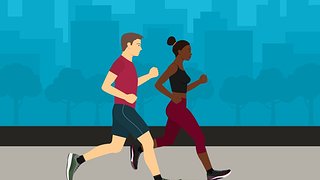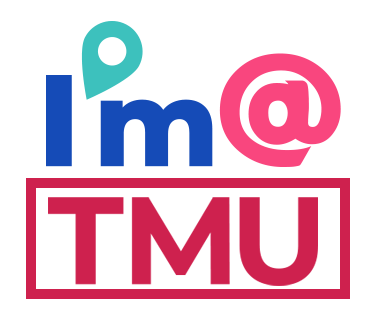- 課程代碼
- 00000226
- 課程名稱
- 運動與健康#
- 學分
- 2
- 學期
- 1091
- 單位
- 一般通識組 (B00)
- 修課人數
- 118 人
- 老師
- 備註
授課日期、授課方式、教學目標、教材內容與學習活動
第1週 (2020/09/18)
授課方式:數位學習(遠距教學)
遠距教學方式:非同步視訊+非同步討論
教學目標:了解不同的運動類型與健康的關係
教材內容:常見有關運動之定義與分類
學習活動:1. 線上課程講解 2.作業繳交
第2週 (2020/09/25)
授課方式:數位學習(遠距教學)
遠距教學方式:非同步視訊+非同步討論
教學目標:能選擇適合自己的運動以促進健康
教材內容:運動強度判定的方法
學習活動:1. 線上課程講解 2. 作業繳交
第3週 (2020/10/02)
授課方式:數位學習(遠距教學)
遠距教學方式:非同步視訊+非同步討論
教學目標:了解運動疲勞的機制
教材內容:運動疲勞的定義
學習活動:1. 線上課程講解 2. 線上討論之引言與加入
第4週 (2020/10/09)
授課方式:數位學習(遠距教學)
遠距教學方式:非同步視訊+非同步討論
教學目標:能區分中樞疲勞與周邊疲勞
教材內容:中樞疲勞與周邊疲勞的機轉
學習活動:1. 線上課程講解 2. 作業繳交
第5週 (2020/10/16)
授課方式:數位學習(遠距教學)
遠距教學方式:非同步視訊+非同步討論
教學目標:1.了解體內恆定機制 2.了解運動時體內恆定的機轉
教材內容:運動時體溫、血壓與血糖受身體恆定作用調控的機轉
學習活動:1. 線上課程講解 2. 作業繳交
第6、7週 (2020/10/23、2020/10/30)
授課方式:數位學習(遠距教學)
遠距教學方式:非同步視訊+非同步討論
教學目標:1.了解運動能力的遺傳度指標之探討 2.了解與運動能力有關的基因
教材內容:1. 運動能力遺傳度指標 2.運動與基因 3. 分子遺傳學在運動科學上之應用
學習活動:1. 線上課程講解 2. 作業繳交
第8、9、10週 (2020/11/06、2020/11/13、2020/11/20)
授課方式:數位學習(遠距教學)
遠距教學方式:非同步視訊+非同步討論
教學目標:1.了解瘦體素與體脂的關係 2.了解有氧運動對體重的影響 3.了解無氧運動對體重的影響 4. 了解阻力訓練對體重的影響
教材內容:1.肥胖研究的歷史 2.瘦體素在人體扮演的角色 3.無氧運動、無氧運動與阻力訓練對體重的影響
學習活動:1. 線上課程講解 2. 作業繳交
第11、12週 (2020/11/27、2020/12/04)
授課方式:數位學習(遠距教學)
遠距教學方式:非同步視訊+非同步討論
教學目標:1. 了解高地低氧對健康的影響 2.了解高地低氧與運動能力的關係
教材內容:1. 高地氣候對人體影響的因素 2. 高地訓練的高度概念
學習活動:1. 線上課程講解 2. 作業繳交
第13、14、15週 (2020/12/11、2020/12/18、2020/12/25)
授課方式:數位學習(遠距教學)
遠距教學方式:非同步視訊+非同步討論
教學目標:1.了解六大營養素與運動能力、身體健康的關係 2.了解不同類型運動其特殊性的飲營養
教材內容:醣類、蛋白質、脂質、維生素、礦物質、與水對身體健康與運動能力的影響
學習活動:1. 線上課程講解 2. 作業繳交
第16週 (2021/01/01)
授課方式:數位學習(遠距教學)
遠距教學方式:非同步視訊+非同步討論
教學目標:1. 運動、腦部活動、睡眠與健康 2. 運動、循環系統與健康
教材內容:1. 了解褪黑激素與腦部活動、睡眠與健康的關係 2. 能區分不同運動訓練與褪黑激素的關係 3. 運動對循環系統的裨益
學習活動:1. 線上課程講解 2. 作業繳交第3週
第17週 (2021/01/08)
授課方式:數位學習(遠距教學)
遠距教學方式:非同步視訊+非同步討論
教學目標:自主學習
教材內容:搜集資料、文獻
學習活動:撰寫期末報告
第18週 (2021/01/15)
授課方式:數位學習(遠距教學)
遠距教學方式:非同步視訊+非同步討論
學習活動:繳交與互評期末報告
- 課程簡介
A. 課程介紹:本課程向學生介紹健康促進、規劃、實施和評估健康促進所涉及的過程是本課程的重點。學生將採用全方位方法,從當前問題的角度探索健康促進和健康決定因素,獲得個人經驗。
B. 課程目標:為學生提供工具,以針對各種人群開發有效的運動和健康促進預防措施。運動和健康行為的基礎理論及其在程序開發中的應用將得到研究。運動和健康促進計劃的製定,包括計劃、實施和評估,將得到廣泛研究。
C. 適合修讀對象:大一以上各系所學生
D. 學前能力:具生物學基本知識、已了解如何利用網路搜尋資料。
- 課程大綱
- 1. 運動與骨骼、肌肉、心血管、肺、神經感覺的適應2. 運動與肥胖、骨質疏鬆、心血管疾病、老化3. 運動與營養補充
- 教科書
參考資料
1. Beals JW, Burd NA, Moore DR, van Vliet S. Obesity alters the muscle protein synthetic response to nutrition and exercise. Frontiers in Nutrition. 2019;6.
2. Betts JA, Gonzalez JT, Burke LM, et al. Present 2020: Text expanding on the checklist for proper reporting of evidence in sport and exercise nutrition trials. International Journal of Sport Nutrition and Exercise Metabolism. 2020;30(1):2-13.
3. Bosma M. Lipid homeostasis in exercise. Drug Discovery Today. 2014;19(7):1019-1023.
4. Brook MS, Wilkinson DJ, Phillips BE, et al. Skeletal muscle homeostasis and plasticity in youth and ageing: Impact of nutrition and exercise. Acta Physiologica. 2016;216(1):15-41.
5. Brook MS, Wilkinson DJ, Phillips BE, et al. Skeletal muscle homeostasis and plasticity in youth and ageing: Impact of nutrition and exercise. Acta Physiologica. 2016;216(1):15-41.
6. Dimauro I, Paronetto MP, Caporossi D. Exercise, redox homeostasis and the epigenetic landscape. Redox Biology. 2020;35.
7. Gonzalez NC, Kuwahira I. Systemic Oxygen Transport with Rest, Exercise, and Hypoxia: A Comparison of Humans, Rats, and Mice. Comprehensive Physiology. 2018;8(4):1537-1573.
8. Hoover EA, Louis JM. Optimizing Health: Weight, Exercise, and Nutrition in Pregnancy and Beyond. Obstetrics and Gynecology Clinics of North America. 2019;46(3):431-440.
9. Hoover EA, Louis JM. Optimizing Health: Weight, Exercise, and Nutrition in Pregnancy and Beyond. Obstetrics and Gynecology Clinics of North America. 2019;46(3):431-440.
10. Jayewardene AF, Mavros Y, Reeves A, Hancock DP, Gwinn T, Rooney KB. Interactions Between Fatty Acid Transport Proteins, Genes That Encode for Them, and Exercise: A Systematic Review. Journal of Cellular Physiology. 2016;231(8):1671-1687.
11. Kerksick CM, Wilborn CD, Roberts MD, et al. ISSN exercise & sports nutrition review update: Research & recommendations. Journal of the International Society of Sports Nutrition. 2018;15(1).
12. Kim H, Reece J, Kang M. Effects of Accumulated Short Bouts of Exercise on Weight and Obesity Indices in Adults: A Meta-Analysis. American Journal of Health Promotion. 2020;34(1):96-104.
13. Landrigan JF, Bell T, Crowe M, Clay OJ, Mirman D. Lifting cognition: a meta-analysis of effects of resistance exercise on cognition. Psychological Research. 2020;84(5):1167-1183.
14. Laskou F, Dennison E. Interaction of nutrition and exercise on bone and muscle. European Endocrinology. 2019;15(1):11-12.
15. Lucas SJE, Cotter JD, Brassard P, Bailey DM. High-intensity interval exercise and cerebrovascular health: Curiosity, cause, and consequence. Journal of Cerebral Blood Flow and Metabolism. 2015;35(6):902-911.
16. Margaritelis NV, Paschalis V, Theodorou AA, Kyparos A, Nikolaidis MG. Antioxidants in personalized nutrition and exercise. Advances in Nutrition. 2018;9(6):813-823.
17. McGlory C, van Vliet S, Stokes T, Mittendorfer B, Phillips SM. The impact of exercise and nutrition on the regulation of skeletal muscle mass. Journal of Physiology. 2019;597(5):1251-1258.
18. Mirizio GG, Nunes RSM, Figueroa ALC, de Sousa Junior I, Ferreira AP, Vieira E. The impact of physical exercise on the skeletal muscle clock genes. Kinesiology. 2018;50:5-18.
19. Panza GA, Armstrong LE, Taylor BA, Puhl RM, Livingston J, Pescatello LS. Weight bias among exercise and nutrition professionals: a systematic review. Obesity Reviews. 2018;19(11):1492-1503.
20. Pescatello LS, Parducci P, Livingston J, Taylor BA. A systematically assembled signature of genes to be deep-sequenced for their associations with the blood pressure response to exercise. Genes. 2019;10(4).
21. Proske U. Exercise, fatigue and proprioception: a retrospective. Experimental Brain Research. 2019;237(10):2447-2459.
22. Schmit C, Brisswalter J. Executive functioning during prolonged exercise: a fatigue-based neurocognitive perspective. International Review of Sport and Exercise Psychology. 2020;13(1):21-39.
23. Sgrò P, Sansone M, Sansone A, et al. Physical exercise, nutrition and hormones: three pillars to fight sarcopenia. Aging Male. 2019;22(2):75-88.
24. Smith JK. Exercise, obesity and CNS control of metabolic homeostasis: A review. Frontiers in Physiology. 2018;9(MAY).
25. Stillman CM, Esteban-Cornejo I, Brown B, Bender CM, Erickson KI. Effects of Exercise on Brain and Cognition Across Age Groups and Health States. Trends in Neurosciences. 2020;43(7):533-543.
26. Stoner L, Beets MW, Brazendale K, Moore JB, Weaver RG. Exercise Dose and Weight Loss in Adolescents with Overweight–Obesity: A Meta-Regression. Sports Medicine. 2019;49(1):83-94.
27. Toohey K, Pumpa K, McKune A, Cooke J, Semple S. High-intensity exercise interventions in cancer survivors: a systematic review exploring the impact on health outcomes. Journal of Cancer Research and Clinical Oncology. 2018;144(1).
28. Treml B, Gatterer H, Burtscher J, Kleinsasser A, Burtscher M. A focused review on the maximal exercise responses in hypo-and normobaric hypoxia: Divergent oxygen uptake and ventilation responses. International Journal of Environmental Research and Public Health. 2020;17(14):1-12.
29. Tse ACY, Wong TWL, Lee PH. Effect of Low-intensity Exercise on Physical and Cognitive Health in Older Adults: a Systematic Review. Sports Medicine - Open. 2015;1(1).
30. Weavil JC, Amann M. Neuromuscular fatigue during whole body exercise. Current Opinion in Physiology. 2019;10:128-136.
31. Yusof HA, Aziz AR, Fauzi NFM, Muhamed AMC. A brief review on ACE I/D gene polymorphism and blood pressure response to exercise training. Malaysian Journal of Medicine and Health Sciences. 2018;14:179-189.
- 成績說明
- 作業 (個人與小組) 60 %期末報告 30 %線上參與暨互動 10 %
- QR Code
- 放大

